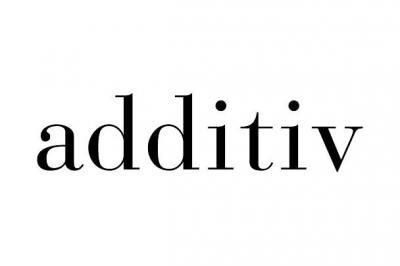Technology has created the potential for wealth management firms to leverage on their troves of client data to curate a unique customer service journey tailored to individual client needs.
Historically, the firms who have managed to attract and retain customers offer diverse products and are able to adapt to their client’s changing needs with time. Dedicated relationship managers (RM) create long lasting profitable relationships for firms. However, the pandemic challenged the sustainability of such a model. If firms want to provide personalized investment information at scale, they need to rely on smart content management solutions.
This paper explores 3 key trends, their challenges to the wealth management industry and concrete steps to adopt a hybrid human – machine investment advisory model.
- Hands off to Hands On – The move from passive to active investing
- No Such Thing as a Typical Client Profile – Client needs are unique and diverse
- Regulation - Stumbling blocks or stepping stones
Content is based on a survey with Financial Institutions headquartered in different regions, conducted in collaboration with Hubbis.
Moving towards a Hybrid Human – Machine Investment Advisory Model
Prior to the COVID-19 pandemic, digital transformation in the wealth management industry was already a strategic imperative well underway. With increased vaccination rates globally, a new normal has emerged with digitalization at the forefront of adaptation strategies. At stake is customer loyalty, engagement, and experience. A winning hand for customer’s hearts and mind have meaningful insights, hyper-personalisation, and customer service. Not forgetting that customers themselves have raising expectations as they too enjoy the increased digital interactions in all aspects of their life[1].
Underpinning this move towards digitalization is Technology. It has created the potential for wealth management firms to leverage on their troves of client data to curate a unique customer service journey tailored to individual client needs. Historically, dedicated relationship managers (RM) curate investment information and delight their customers, creating long lasting profitable relationships for firms. However, the pandemic challenged the sustainability of such a model. If firms want to provide personalized investment information at scale, they need to rely on smart content management solutions.
In a recent survey by Factset, the top 3 factors that provide clients assurance of the credibility of their Wealth Manager are an excellent brand, competent employees, and quality information for investment ideas[2]. With the focus on digitalization and technology, firms can consider the following actions when establishing an intelligent content management solution to ensure personalized content.
- Production - Leverage on technology to automate the production of format neutral content.
- Matching – Match content with client recipients based on the analysis of existing client data, preferences, and regulatory requirements.
- Distribution - Reduce the cost to serve by enabling automated distribution of content through various channels (social media, E-banking, Mobile App, Email and Print).
- Intelligent Learning – Enable the content management solution to learn through an automated feedback loop.
This does not mean abandoning the RMs that are crucial to the business model. Instead, a hybrid model is suggested, in which RMs are enabled by technology in order to serve more clients more meaningfully.
Macro Trends & Their Challenges
Hands Off to Hands On
High Net Worth Individuals (“HNWI”) are starting to move away from passive investment strategies to making self-directed investment decisions[3]. This leads to demand for greater access to timely information on investment products or topics of interest relevant to their portfolio needs. In an environment where it remains common for RMs to manually customize reports provided to clients, these demands are oftentimes left unmet, resulting in unquantifiable lost opportunities and frustrated clients.
Investment options and demands are more varied than they have been in the past. Whether it is in Environmental, Social and Governance (“ESG”) related space or alternative investments like digital currencies or Non-Fungible Tokens (“NFTs”). It becomes more costly and effortful for firms and their RMs to provide adequate information and complete information to clients for their decision making.
No Such Thing as a Typical Client Profile
The profile of the client is becoming increasingly diverse. There are 114% more female owned businesses in the US than there were 20 years ago[4]. The wealth in emerging markets continue to rise[5] triggering a class of “nouveau riche”. Technology and alternative financial products have created new sources of income, many of whom are young and tech-savvy. The family nucleus is also evolving. With more single parent families, co-habitation, same sex marriages in recent decades[6]. Against this backdrop, wealth management firms are pressured to keep up, empathise and deliver accordingly.
Firms should reflect whether:
- They understand the unique and nuanced needs of their clients against so many personalisation points.
- They leverage on existing client data to discover meaningful insights.
- The status quo of a bank centric approach is ready for an increasingly customer led industry.
Regulation - Stumbling Blocks or Stepping Stones?
Some regulators, now conscious about not becoming obstacles to innovation, are working with financial institutions to better understand ways to shape the business landscape. Nonetheless, in a global market, keeping up with different regulations and their changes can be difficult. In Thomson Reuter’s 2018 Cost of Compliance report, there were more than 56,000 regulatory changes in 2017 alone[7].
It appears meeting these obligations necessitate higher expenditures or risk stiff penalties[8]. At present, accountability is pushed to the Front Office who is expected to also be self-enforcing compliance requirements. The sheer difficulty of this deter firms from capitalizing on new business opportunities, whether in new spaces or geographical locations.
It is precisely because of the difficulties that firms who have a handle on this find themselves with a lasting competitive advantage. Many compliance officers see technology as part of the answer. By ensuring that operations adhere to a robust framework that include checks on licensing regimes and client suitability, firms can efficiently offer client compliant information and offerings. This contributes to better client engagement, and ultimately more business for the firm[9].
How does a global wealth management company sharpen its competitive edge?
A large Swiss Private Bank used to depend on their RMs having access to all sales related materials, everywhere. From pitch books, presentations to fact sheets. Ensuring materials were up to date, compliant and timely distributed to clients was an onerous task. In 2018, the Bank adopted a technology enhanced content management approach to automate this process, free up time of their RMs to be better spent engaging more clients on a meaningful level. Through an integrated content management solution, its content templates are automatically updated, translated, compliant with regulations and distributed. This improved efficiency and reduced the time spent by RMs on administrative tasks and automates regulatory requirement fulfilment that used to be a tedious process.
Amidst this challenging landscape lies opportunities to create a competitive advantage for firms that can adopt a hybrid model where RMs are enabled by technology led content management solutions.
Banks Recognise the Need for a Hybrid Service Model, Few have Taken the Leap
Firms that adopt a hybrid human – machine investment advisory model will find themselves with a success differentiator. The APAC region sees more RM-client interaction as clients are often served on an advisory basis and tend to transact more frequently. Digital disruption is also happening apace in this region, clients tend to be more digital savvy than Europe, allowing with digital service models to be more commonly adopted. This might be the reason for (1) a fully customizable, comprehensive, client-driven multi-channel interaction, and (2) advisor enablement being listed in Accenture-Orbium[10] survey as one of Wealth Management’s (“WM”) top priorities for 2025.
Despite this, only a handful of market leaders have taken the leap towards a technology enabled solution. Why is that? Reasons are multiple and varied, but a simple element can explain this discrepancy: the fear of sailing in the unknown.
In wanting to and design a future-proof customer experience that revolves around hyperpersonalization, most WM are still uncertain of the right business model to implement and the necessary technology to drive it[11]. As a result, many WM are tempted to adopt a passive approach by waiting for the market leaders to implement their own strategies and follow suit after.
Nonetheless, with the acceleration towards digitization and hyper-personalisation of client engagement, such a wait-and-see approach is a dangerous game where losing the competition may have lasting impact on the firm’s ability to attract and retain clients.
A Leap is Not Needed – Start with Taking the First Step
By first understanding the gaps between the current content management model and its ideal state, firms can establish an implementation road map. Figure 1 represents the 4 key pillars in a Content Management solution. These pillars are content production, matching, distribution, and feedback. By using this as a guide, firms can establish their own vision of an ideal state. Following this, firms can identify room for improvement in their own content creation, approval workflows, governance and personalized content distribution process.
(Figure 1: Content Management Operating Model).
Building Blocks for a Future-Proof Intelligent Content Management Solution
Sounds simple and ready to ramp up implementation? Our experience has shown that firms who are overly ambitious and eager to overhaul all existing processes and tackle every aspect of the value chain at once, often find themselves with an incoherent operating model that not only fails to deliver the vision but puts them at a disadvantage.
Being able to leverage on existing data to develop insights through artificial intelligence (“AI”) remains a crucial element to achieve hyper-personalisation as a competitive advantage. It’s a given. But firms should not put the cart before the horse. Such insights would fail to translate into more client engagement if WM do not have their content format-neutral and ready to be sent to their clients through their preferred channels. Understanding this multi-layered complexity, we support a modular approach where focus is first placed on content creation. Our expertise has shown that this creates the solid foundations upon which a future-proof content management solution can be built. Only then, organisations should seek to implement a robust data management that cut across data silos throughout the enterprise to be able to leverage their data.
(Figure 2: Survey Results)
Reap the Rewards Early
When asked about the importance of potential benefits reaped from an intelligent content management solution, many respondents ranked “Increase Client Engagement” to be the chief benefit while “Regulatory Compliance” takes a back seat (Figure 3) While firms are eager to see their return in investment coming from higher client engagement and satisfaction, they should not underestimate the potential cost savings of more efficient regulatory risk management. This can come from requiring fewer manual processes to ensure compliant content, e.g. disclaimers.
(Figure 3: Survey Results)
Our respondents have indicated that content management is commonly managed by either a dedicated team (47%) or shared across multiple teams via email (27%) (see Figure 4).
(Figure 4: Survey Results)
New Model – Format Neutral Content Creation/Distribution
Content creation involves many tasks that are executed by various teams like content writing & editing, translation, approvals and others. This labour-intensive process can be made more efficient while reducing risks when implementing a state of the art content management tool. Referencing Figure 5, one can see how adopting format neutral content creation in a defined workflow can provide tangible efficiency gains for the content management process. The content can then be distributed via the hybrid model to serve more clients more meaningfully.
(Figure 5: Format Neutral Content Distribution Model)
Removing Roadblocks and Paving the way for Change/Success
Not having a strong culture for change is one of the biggest challenges. From our experience, RMs want to control the content sent to their clients and liaise with them personally. In its ideal state, the content management model does not replace the role of RMs, but rather, it enables the RMs to focus on cultivating strong personal client relationships by providing RMs easy access to ready content. When improving the Content Production process, all stakeholders (marketing, translators, approvers, investment writers and RMs) should be involved at the earliest stage. Efficiency gains will be shared and experienced first-hand, increasing buy in and adoption. Subsequently, when rolling out Content Processing and Distribution processes that allows automated matching to customer preferences and evolving behaviours, even more scalable efficiency gains will be generated to the front office.
Finishing Touches
After a company has decided to take the next step in Content Management, it is crucial to make sure the following conditions are met:
- Clear definition of processes and assignment of responsibilities for such an initiative.
- Structured overview of content types and potential content templates.
- Readiness across teams to standardise certain processes (if needed).
- Understanding of the output formats and channels required today and the future.
- Definition of typical client use cases, i.e., how do our clients engage with the content.
Without these conditions, Companies risk developing solutions to address past and present client needs instead of anticipating future demands.
When Theory becomes Practise
We recommend that a Proof-of-Concept (POC) be first established for a selected content type, format and distribution channel. This serves as a basis to sequentially broaden the use cases to fully realise the benefits of an intelligent content management solution. Involving existing content management team members remain crucial towards starting champions for change from within the firm.
Finding your Compass with the Right Partners
At Finalix and gateB, we bring our expertise on Intelligent Content Management in Wealth Management to our clients. Specialising in the roll out of successful projects in the APAC region to empower the next generation of advisors through digitally enabled workplaces and data-powered hyper-personalization to deliver best-in-class service.
On projects, Finalix focus on consulting and conceptual work on the business side, breaking down the visions of the clients into implementable pieces, orchestrating the rollout and liaising with the relevant product company and implementation partner. gateB over-sees the technical configurations, programming, and integration to the clients’ legacy systems. As proven partners, we bring an independent lens to view problems and expertise of industry best practices.
Ready to get started? Get in touch with us.
[1] “Wealth Management Trends 2021” – 2021
[2] “What Ultra High Net Worth Clients Want From Wealth Managers” – November 27, 2019
[3] “World Wealth Report 2021”, 2021
[4] “Women Entrepreneur Statistics”, 2021
[5] “The Wealth Report by Knight Frank”, 2020
[6] “Marriages and Divorces”, accessed on July 2021
[7] “Cost of Compliance 2018 Report” – Thomson Reuters, 2018
[8] “U.S., EU fines on banks’ misconduct to top $400 billion by 2020: report” – Reuters, September 2017
[9] “Automated Preparation of Product Fact Sheets and Client Presentations” – gateB, 2018
[10] Accenture-Orbium Wealth Management C-Level Survey 2020
[11] Accenture-Orbium Wealth Management C-Level Survey 2020

WRITTEN BY





